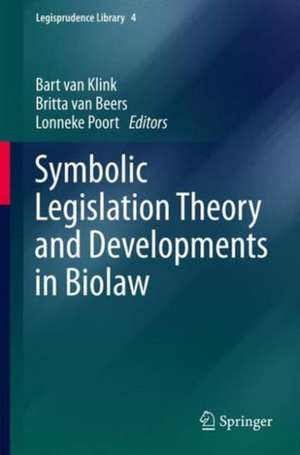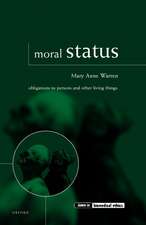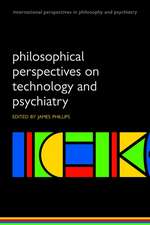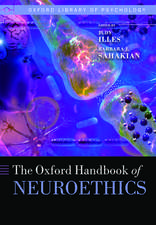Symbolic Legislation Theory and Developments in Biolaw: Legisprudence Library, cartea 4
Editat de Bart van Klink, Britta van Beers, Lonneke Poorten Limba Engleză Hardback – 9 sep 2016
Symbolic legislation has a bad name. It usually refers to instances of legislation which are ineffective and that serve other political and social goals than the goals officially stated. Recently, a more positive notion of symbolic legislation has emerged in legislative theory. From this perspective, symbolic legislation is regarded as a positive alternative to the more traditional, top-down legislative approach. The legislature no longer merely issues commands backed up with severe sanctions, as in instrumental legislation. Instead, lawmakers provide open and aspirational norms that are meant to change behavior not by means of threat, but indirectly, through debate and social interaction.
Since the 1990s, biomedical developments have revived discussions on symbolic legislation. One of the reasons isthat biomedical legislation touches on deep-rooted, symbolic-cultural representations of the biological aspects of human life. Moreover, as it is often impossible to reach consensus on these controversial questions, legislators have sought alternative ways to develop legal frameworks. Consequently, communicative and interactive approaches to legislation are prominent within the governance of medical biotechnology.
The symbolic dimensions of biolaw are often overlooked. Yet, it is clear that the symbolic is at the heart of many legal-political debates on bioethical questions. Since the rise of biomedical technologies, human body materials have acquired a scientific, medical and even commercial value. These new approaches, which radically question existing legal symbolizations of the human body, raise the question whether and how the law should continue to reflect symbolic values and meanings. Moreover, how can we decide what these symbolic values are, given the fact that we live in a pluralistic society?
| Toate formatele și edițiile | Preț | Express |
|---|---|---|
| Paperback (1) | 785.23 lei 38-44 zile | |
| Springer International Publishing – 12 iun 2018 | 785.23 lei 38-44 zile | |
| Hardback (1) | 955.88 lei 22-36 zile | |
| Springer International Publishing – 9 sep 2016 | 955.88 lei 22-36 zile |
Preț: 955.88 lei
Preț vechi: 1165.70 lei
-18% Nou
Puncte Express: 1434
Preț estimativ în valută:
182.91€ • 191.45$ • 152.24£
182.91€ • 191.45$ • 152.24£
Carte disponibilă
Livrare economică 10-24 martie
Preluare comenzi: 021 569.72.76
Specificații
ISBN-13: 9783319333632
ISBN-10: 3319333631
Pagini: 308
Ilustrații: XI, 301 p. 1 illus.
Dimensiuni: 155 x 235 x 22 mm
Greutate: 0.74 kg
Ediția:1st ed. 2016
Editura: Springer International Publishing
Colecția Springer
Seria Legisprudence Library
Locul publicării:Cham, Switzerland
ISBN-10: 3319333631
Pagini: 308
Ilustrații: XI, 301 p. 1 illus.
Dimensiuni: 155 x 235 x 22 mm
Greutate: 0.74 kg
Ediția:1st ed. 2016
Editura: Springer International Publishing
Colecția Springer
Seria Legisprudence Library
Locul publicării:Cham, Switzerland
Cuprins
Contributors.- Preface: New Challenges.- 1 Introduction: Symbolic Dimensions of Biolaw; Lonneke Poort, Britta van Beers & Bart van Klink.- Part I Symbolic Legislation: The Symbolic Quality of Law.- 2 Symbolic Legislation: An Essentially Political Concept; Bart van Klink.- 3 The Emerging Interactionist Paradigm and the Ideals of Democracy and Rule of Law; Wibren van der Burg.- 4 How Law Matters: Sociological Reflections on the Symbolic Dimension of Legislation; Rob Schwitters.- 5 The Tension between the Functions of Law: Ending Conflict vs. Dynamics; Lonneke Poort.- 6 Symbolic Legislation and Authority; Oliver W. Lembcke.- 7 On Legal Symbolism in Symbolic Legislation: A Systems Theoretical Perspective; Jiří Přibáň.- Part II Symbolic Approaches to Biolaw: Biolaw as a Symbolic Order.- 8 The Law and the Symbolic Value of the Body; JonathanHerring.- 9 Revisionist versus Broad Bioethics and Biolaw; Herman De Dijn.- 10 Bioeconomy, Moral Friction and Symbolic Law; Klaus Hoeyer.- 11 From Winged Lions to Frozen Embryos, Neomorts and Human-Animal Cybrids: The Functions of Law in the Symbolic Mediation of Biomedical Hybrids; Britta van Beers.- 12. The Symbolic Meaning of Legal Subjectivity; Dorien Pessers.- Part III Legislative Strategies: Regulating Biomedical Developments from a Symbolic Perspective.- 13 The Natural, the Informational, the Claimable? Human Body Material in US and European Patent Law; Sigrid Sterckx and Julian Cockbain.- 14 Material uncertainty: Nanomaterials, Regulation and Symbolic Legislation; Robert Lee and Elen Stokes.- 15 The Democratic Legitimacy of Interactive Legislation of the European Union Concerning Human Embryo Research; Nicolle Zeegers.- 16 Changing Expectations of Experts: the Symbolic Role of Ethics Committees; Lonneke Poort and Bernice Bovenkerk.- 17 Law as a Symbolic Order: Some Concluding Remarks; Britta van Beers, Bart van Klink and Lonneke Poort.
Notă biografică
Bart van Klink is Professor of Legal Methodology at Vrije Universiteit Amsterdam, The Netherlands. He has published several articles and books on symbolic legislation theory, among which his dissertation De wet als symbool (Law as a Symbol, 1998) and, together with Nicolle Zeegers and Willem Witteveen, the edited volume Social and Symbolic Effects of Legislation under the Rule of Law (2005). He is co-founder of the research group Biolaw and Symbolic Interaction (BioSI).
Britta van Beers is Associate Professor at the Department of Legal Theory at VU University, Amsterdam. Her research involves the legal-philosophical aspects of the regulation of medical biotechnology. Recent publications include the edited volume Humanity across International Law and Biolaw (with Luigi Corrias and Wouter Werner, Cambridge University Press 2014); and 'Is Europe ‘Giving in to Baby Markets’? Reproductive Tourism in Europe and the Gradual Erosion of Existing Legal Limits to Reproductive Markets’ (Medical Law Review, 2015).
Lonneke Poort is assistant professor at Erasmus School of Law in Rotterdam, The Netherlands. She is also member of the subcommittee on social and ethical aspects of genetic modification of the Netherlands Commission on Genetic Modification (COGEM). She published several articles and a book on the interactive approach to law among which her dissertation Consensus & Controversies in Animal Biotechnology. An Interactive Legislative Approach to Animal Biotechnology in Denmark, Switzerland, and the Netherlands (Den Haag: Eleven International Publishing 2013).
Britta van Beers is Associate Professor at the Department of Legal Theory at VU University, Amsterdam. Her research involves the legal-philosophical aspects of the regulation of medical biotechnology. Recent publications include the edited volume Humanity across International Law and Biolaw (with Luigi Corrias and Wouter Werner, Cambridge University Press 2014); and 'Is Europe ‘Giving in to Baby Markets’? Reproductive Tourism in Europe and the Gradual Erosion of Existing Legal Limits to Reproductive Markets’ (Medical Law Review, 2015).
Lonneke Poort is assistant professor at Erasmus School of Law in Rotterdam, The Netherlands. She is also member of the subcommittee on social and ethical aspects of genetic modification of the Netherlands Commission on Genetic Modification (COGEM). She published several articles and a book on the interactive approach to law among which her dissertation Consensus & Controversies in Animal Biotechnology. An Interactive Legislative Approach to Animal Biotechnology in Denmark, Switzerland, and the Netherlands (Den Haag: Eleven International Publishing 2013).
Textul de pe ultima copertă
This edited volume covers new ground by bringing together perspectives from symbolic legislation theory on the one hand, and from biolaw and bioethics on the other hand.
Symbolic legislation has a bad name. It usually refers to instances of legislation which are ineffective and that serve other political and social goals than the goals officially stated. Recently, a more positive notion of symbolic legislation has emerged in legislative theory. From this perspective, symbolic legislation is regarded as a positive alternative to the more traditional, top-down legislative approach. The legislature no longer merely issues commands backed up with severe sanctions, as in instrumental legislation. Instead, lawmakers provide open and aspirational norms that are meant to change behavior not by means of threat, but indirectly, through debate and social interaction.
Since the 1990s, biomedical developments have revived discussions on symbolic legislation. One of the reasons is that biomedical legislation touches on deep-rooted, symbolic-cultural representations of the biological aspects of human life. Moreover, as it is often impossible to reach consensus on these controversial questions, legislators have sought alternative ways to develop legal frameworks. Consequently, communicative and interactive approaches to legislation are prominent within the governance of medical biotechnology.
The symbolic dimensions of biolaw are often overlooked. Yet, it is clear that the symbolic is at the heart of many legal-political debates on bioethical questions. Since the rise of biomedical technologies, human body materials have acquired a scientific, medical and even commercial value. These new approaches, which radically question existing legal symbolizations of the human body, raise the question whether and how the law should continue to reflect symbolic values and meanings. Moreover, how can we decide what these symbolic valuesare, given the fact that we live in a pluralistic society?
Symbolic legislation has a bad name. It usually refers to instances of legislation which are ineffective and that serve other political and social goals than the goals officially stated. Recently, a more positive notion of symbolic legislation has emerged in legislative theory. From this perspective, symbolic legislation is regarded as a positive alternative to the more traditional, top-down legislative approach. The legislature no longer merely issues commands backed up with severe sanctions, as in instrumental legislation. Instead, lawmakers provide open and aspirational norms that are meant to change behavior not by means of threat, but indirectly, through debate and social interaction.
Since the 1990s, biomedical developments have revived discussions on symbolic legislation. One of the reasons is that biomedical legislation touches on deep-rooted, symbolic-cultural representations of the biological aspects of human life. Moreover, as it is often impossible to reach consensus on these controversial questions, legislators have sought alternative ways to develop legal frameworks. Consequently, communicative and interactive approaches to legislation are prominent within the governance of medical biotechnology.
The symbolic dimensions of biolaw are often overlooked. Yet, it is clear that the symbolic is at the heart of many legal-political debates on bioethical questions. Since the rise of biomedical technologies, human body materials have acquired a scientific, medical and even commercial value. These new approaches, which radically question existing legal symbolizations of the human body, raise the question whether and how the law should continue to reflect symbolic values and meanings. Moreover, how can we decide what these symbolic valuesare, given the fact that we live in a pluralistic society?
Caracteristici
Provides new multidisciplinary insights into complicated, morally sensitive issues in the field of biolaw Contributes to the public debate on the dilemmas and controversies raised by new biomedical developments Provides practical guidelines to practitioners engaged in the drafting of bioregulation

























